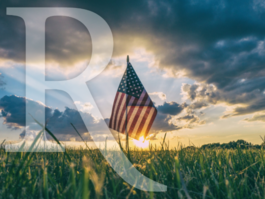Lindsay Lohan and the Crash of Fashion
A Commentary By Froma Harrop
Every time the economy swoons and the racks groan with the weight of unsold women's clothing, purveyors of fashion talk up "investment dressing." Investment dressing entails buying a few well-constructed garments that will endure both physically and stylistically for several years.
Needless to say, the fashion business hates the concept, but it has no choice when customers are holding fast to their wallets. During the boom years, women's clothing resembled subprime mortgages. They were outrageously designed and not made to last.
Not everyone in the business quite "gets" the point of investment dressing. One of the classic items is the "little black dress" -- a simple black sheath to which one may add a variety of accessories to completely change the look. One fashion how-to Website offers advice on "how to dress up that little black dress," and the example it uses is a shoulderless number with a dozen flounces and a very asymmetrical hem. The only accessory that could radically change that look would be a burqa covering the whole thing.
Anyhow, the highest-end designers are trying to lower their prices by skimping on the fine fabrics and moving factories to Asia. But their problems go beyond the price of their garments. Not many women buy $3,000 dresses in any case, but the few who do want to look classy. In recent years, the designs have trended toward the trashy and clownish, inappropriate for self-respecting teens, much less grownups.
As a result, some of the houses have "lost face" over recent years, reports The New York Times. "Their clothes became exotically pricey as they courted celebrities and did quick-and-dirty deals with makers of fast fashion."
That situation reached "a nadir of sorts," opined the same writer, when the great Paris house of Emanuel Ungaro chose Lindsay Lohan as an artistic adviser.
I'm not the person Paris couturiers consult on fashion matters. But as a consumer and observer of the challenges for retailing, I can offer a little advice.
Lindsay Lohan is the problem, not the solution. And she's a problem not just for fancy designers like Ungaro, but for purveyors of fashion right down to the sweatshop knock-offs.
A model-turned-actress-turned-singer, Lohan is chiefly known for her car crashes, drug use, drunken-driving arrests and swings through rehab. Oh, she did put out a line of leg-tanner spray.
Lohan resides in the tabloid kingdom of Britney Spears and the other bad girls. Their messed-up lives put them on the magazine covers, wearing tarty dresses and smiles of desperation.
What woman, with or without money, would want to copy Lindsay Lohan? One commenter on New York Magazine's fashion blog asks, "When will production companies, marketing execs and the like understand that Lindsay is a repellant?" Another wrote: "I am so tired of the celebrity designer. ... I would not want to wear what the majority of celebrities are photographed in."
After Ungaro made Lohan an artistic adviser, the house's lead designer, Esteban Cortazar, quit. Ungaro purports to be seeking a younger customer, but the Miami-raised Cortazar is only 25. He is a fashion prodigy who understands the youth culture. Cortazar's last straw was reportedly being asked to hold Lohan's hand as he took a bow at the end of his runway show.
If women want to look cheap, then cheap clothes will do. The H&M chain sells "cheap chic," and its sales have held up as those at fancy Neiman Marcus and Saks Fifth Avenue have plummeted.
The high-end clothiers are said to be worried that their customers will not return after the recession ends. Actually, they can influence the future more than they seem to know.
COPYRIGHT 2009 THE PROVIDENCE JOURNAL CO.
DISTRIBUTED BY CREATORS.COM
Views expressed in this column are those of the author, not those of Rasmussen Reports.
See Other Political Commentary.
See Other Commentaries by Froma Harrop.
Rasmussen Reports is a media company specializing in the collection, publication and distribution of public opinion information.
We conduct public opinion polls on a variety of topics to inform our audience on events in the news and other topics of interest. To ensure editorial control and independence, we pay for the polls ourselves and generate revenue through the sale of subscriptions, sponsorships, and advertising. Nightly polling on politics, business and lifestyle topics provides the content to update the Rasmussen Reports web site many times each day. If it's in the news, it's in our polls. Additionally, the data drives a daily update newsletter and various media outlets across the country.
Some information, including the Rasmussen Reports daily Presidential Tracking Poll and commentaries are available for free to the general public. Subscriptions are available for $4.95 a month or 34.95 a year that provide subscribers with exclusive access to more than 20 stories per week on upcoming elections, consumer confidence, and issues that affect us all. For those who are really into the numbers, Platinum Members can review demographic crosstabs and a full history of our data.
To learn more about our methodology, click here.



